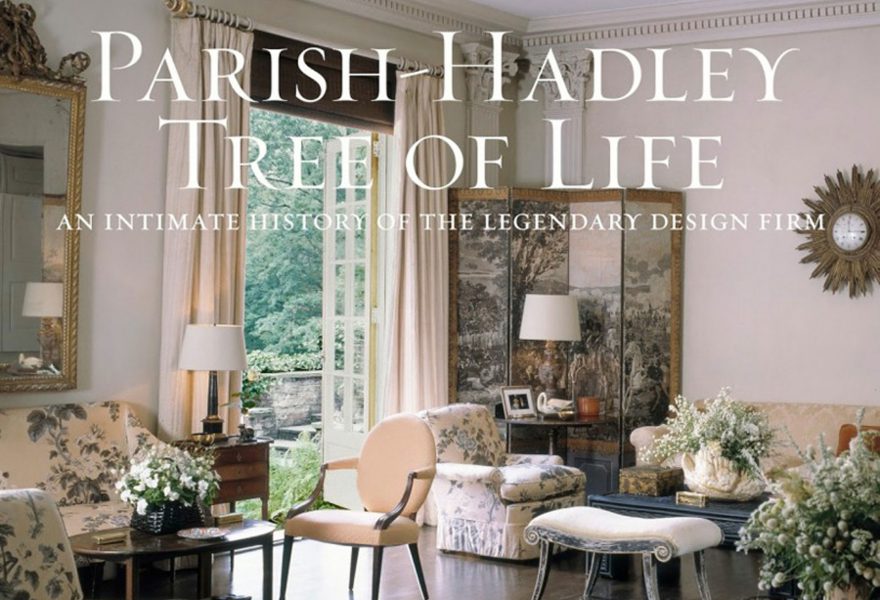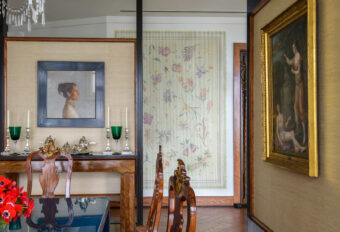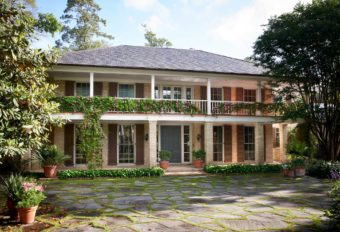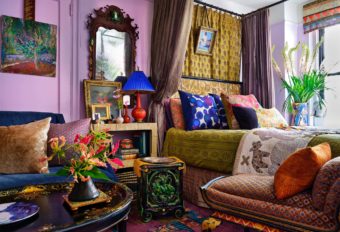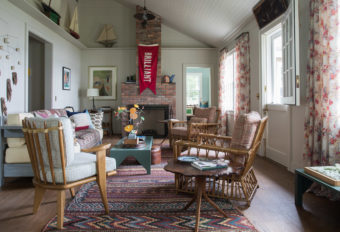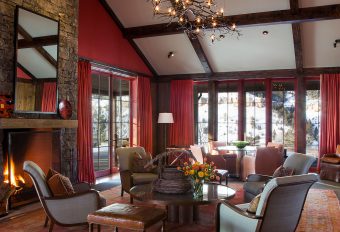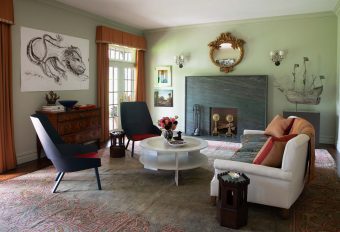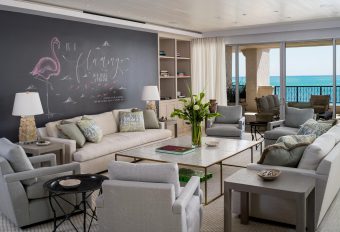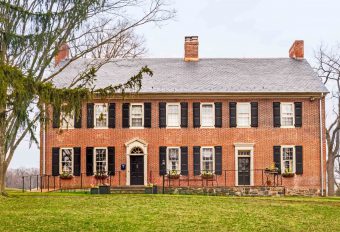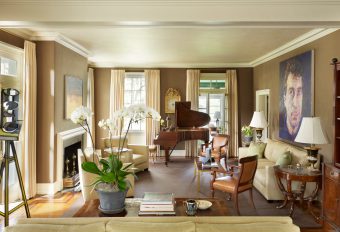The amazing legacy of Parish-Hadley is in the spotlight with the publication of a new book of reminisces of Sister Parish and Albert by their “colleagues” (as they called their employees) who went on to have careers of their own. The firm was always keen to hire the best talent without fear of future competition. Philosophically, Albert always felt that everyone in the end should “go out on their own.”
Excerpted here is a passage I wrote for the book which speaks of the type of growth and mutually beneficial transition he encouraged. I have also included the last photographs of Albert’s legendary apartment that I published in The Finest Rooms, a collection of rooms that represent American refinement, something I learned a great deal about at Parish-Hadley.
From my section in Parish Hadley – Tree of Life:
Albert taught me how to go about making a comfortable room, and having an object of quality as a focus. I have never been in a Parish-Hadley room that did not have a work of art—usually the object of focus that a room is arranged around. It may not have always been valuable, but there was art. And there was always thought given to the room’s arrangement. This is what makes a fine room.
Not long ag I wrote “The Finest Rooms in America”, a personal selection of American rooms that I consider fine, all created by designers other than me. I asked to feature the sitting room of Albert’s apartment as the last room in the book, and he gave me permission to photograph it. Then, the day before the shoot, he called to say he had changed his mind. “this room is not grand enough,” he said. I paused, then asked to go ahead with the photographs, offering to show him the layout for his approval. And I emphasized that the point I wanted to make in the book is that a fine room is not just a room of extreme luxury. it is a room with a focus and thought about its arrangement. His room epitomized how a relatively modest spaces can be a fine room, and in the end he blessed the manuscript.
As I showed him the layout, he was talking about closing his firm, and about the people who had most recently worked for him. He said, “You know, I did what I always do. I encouraged them to go out on their own.” That was his way, and likely why there are so many Parish-Hadley “alumni”.
It turns out that my photographs of the living room and the sitting room are the last photographs taken of his apartment. The living room has that great, of-the-moment holographic paper on the ceiling. The Italian crane lamp with colored shades had been in his apartment since the 1950s, and he just moved it forward. You can see certain pieces he carries over, and new pieces he adds. He had a great eye for arrangement, and he was very editorial about his own rooms. Not all of us can live up to that standard, but it is highly inspirational.
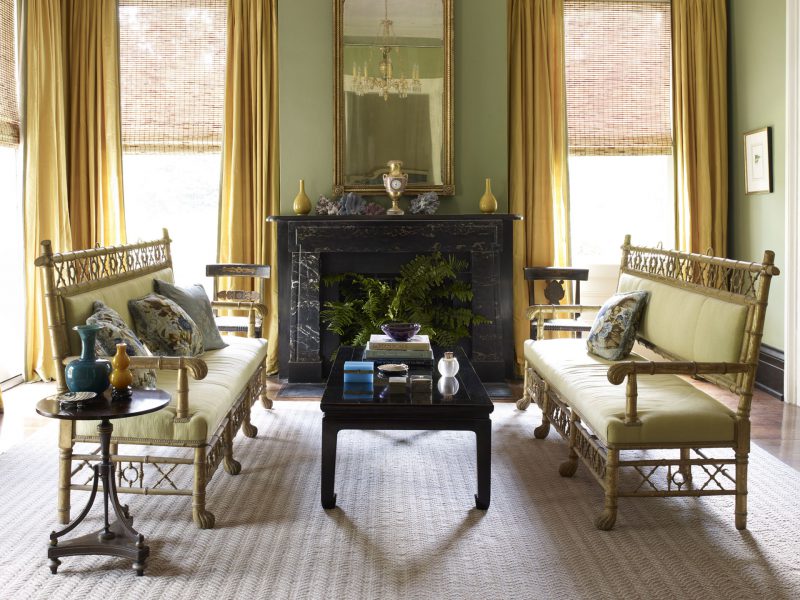
The parlor of Julia Reed’s house in New Orleans is featured in our chapter of Parish-Hadley – Tree of Life. We helped Julia to create a scheme based on the memory of her grandmother’s house in Nashville, decorated by Herbert Rogers with a young Albert Hadley as assistant.
And here is the passage I wrote on Albert’s apartment.
Albert Hadley was reticent for his New York apartment to be represented here because he felt it was not grand enough. But, while it is not a large space, Hadley’s sitting room encapsulates the notion that refinement is not about size. In fact, the success of Hadley’s room is created by its intimacy as well as by the play of patterns and voids that come together in a complete and artistic picture. On one wall there is an alcove with a day bed under a mirror. Opposite, a framed panel of turquoise serves as a centering device. All of the walls are covered in one of Hadley’s signature patterns and the shiny brown lacquered ceiling highlights the regular geometry, uniting all the parts of the room and injecting a sense of expansiveness into the small space. The white-painted chairs and lacquered work table are light and effortless to rearrange, making it easier to move about the room and to use the space for different occasions. Hadley has also set the visual center relatively low, making the room welcoming and commodious. His works of art, many of them associated with some of the most important figures of twentieth-century American decoration, including Elsie de Wolfe, Van Day Truex, and Eleanor Brown, represent the continuum of great decorators among which Hadley can easily be counted. What makes this or any room fine? It is the sum of parts, whether elaborate or simple, novel or well-known, that in the end, as Hadley so remarkably demonstrates, is the tangible genius of its maker.
Theses photos show Albert Hadley’s sitting room, and below his living room and entry. Photos by Kerri McCaffety)
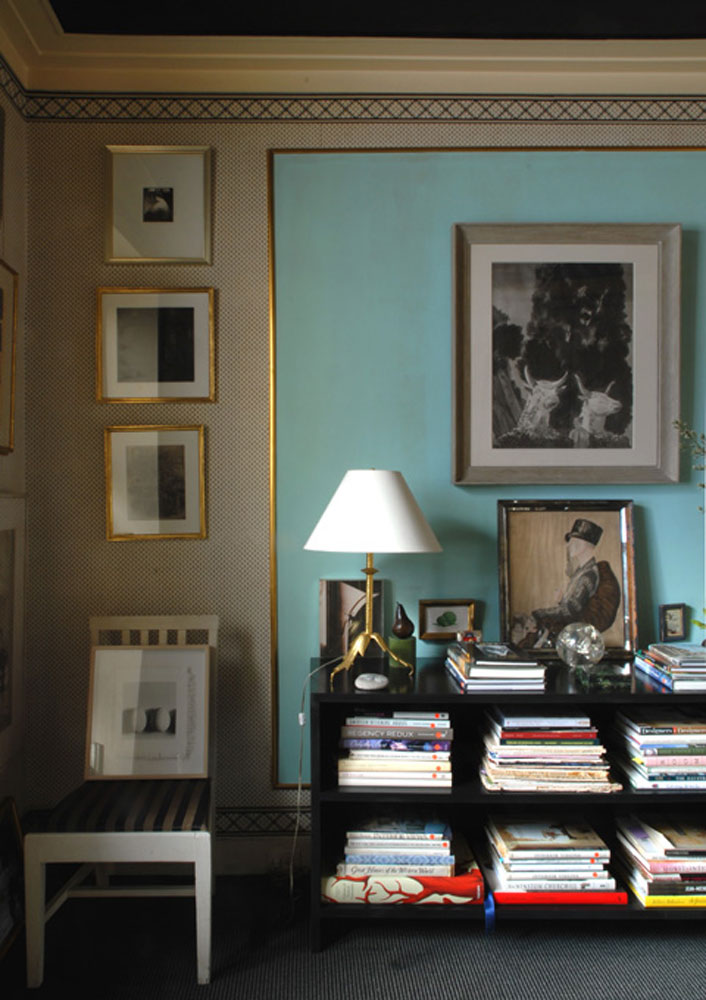
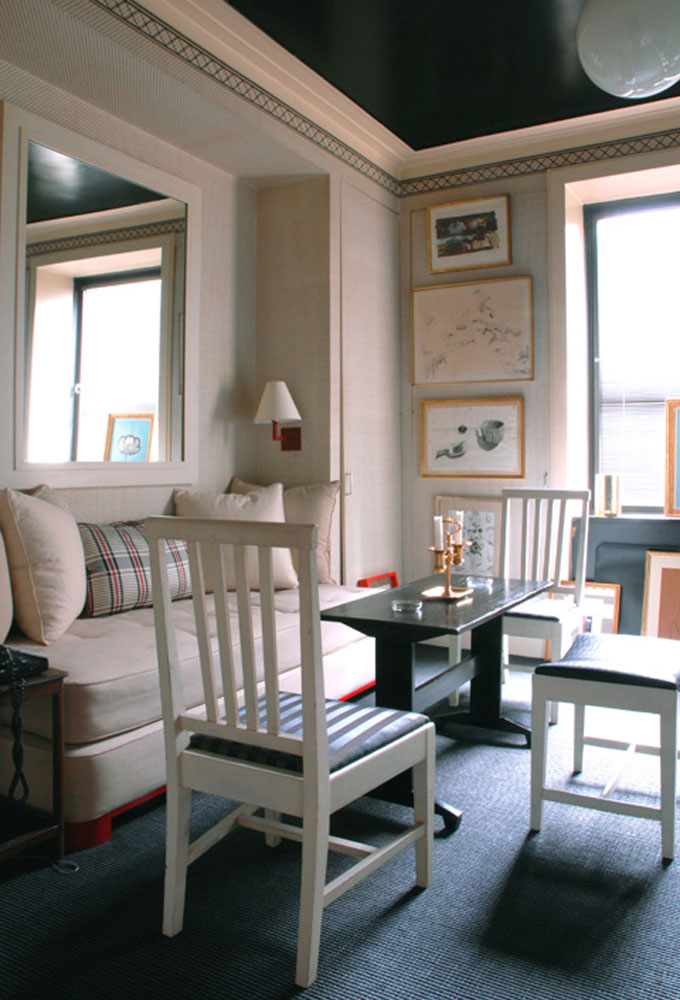
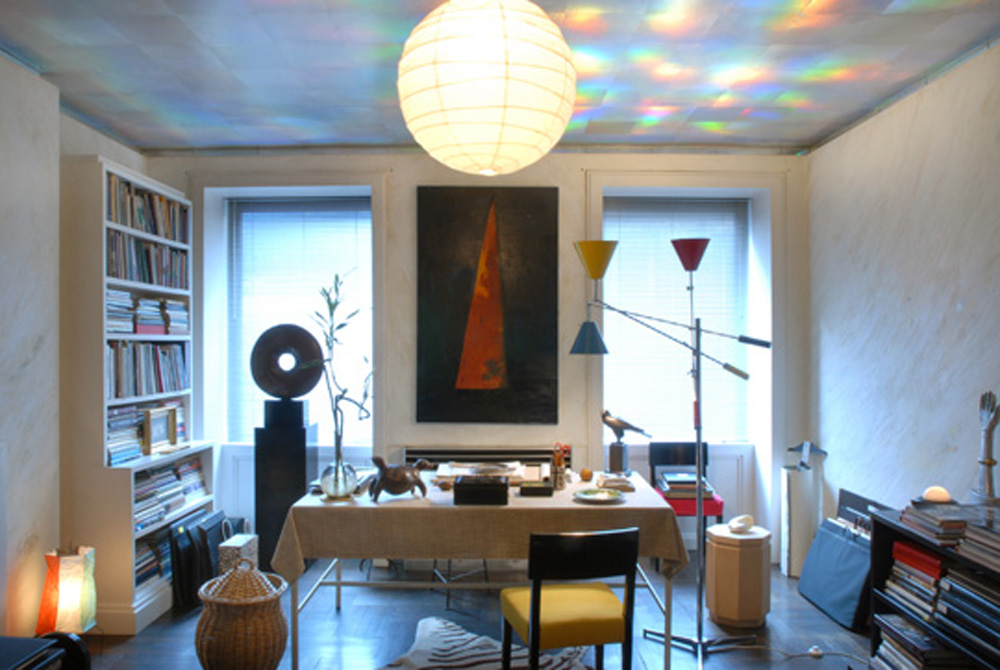
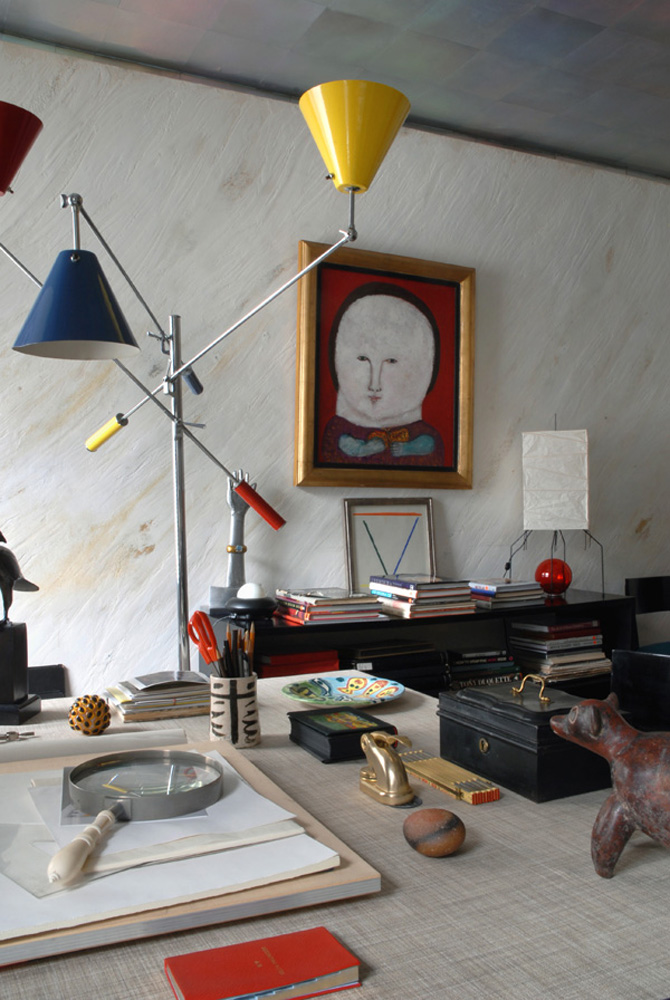
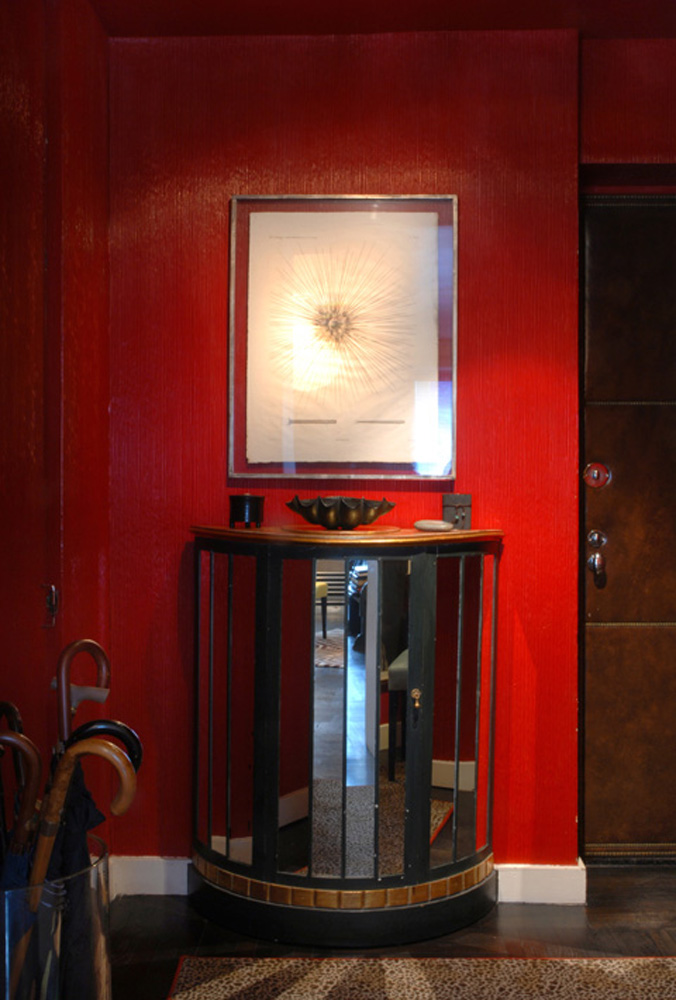
Further reading:
See Architectural Digest’s review of the book.
My own tribute to Albert from 2012 in TMagazine’s blog.
And, Albert’s obituary from the New York Times which illuminates his life and achievements.




